|
Which mountain was the resting place of Noah’s ark? If you answered “Mount Ararat”, you are wrong. The Bible never specifically refers to Mount Ararat. “And on the seventeenth day of the seventh month the ark came to rest on the mountains of Ararat.” (Genesis 8:4, NIV) The wording of this verse implies the ark came to rest on mountains in an area called Ararat.
Ararat is mentioned again in 2 Kings 19:37 (NIV): “One day, while he was worshipping in the temple of his god Nisrok, his sons Adrammelek and Sharezer killed him with the sword, and they escaped to the land of Ararat. And Esarhaddon his son succeeded him as king.” Jerusalem was delivered from the Assyrians after the death of Sennacherib, the king of Assyria. Isaiah had predicted his death and his murderers fled to the land of Ararat. Note there is no mention of a mountain. Isaiah 37:38 records the same incident. In Jeremiah 51:27 (NIV), Ararat is one of the kingdoms summoned to destroy Babylon. “Lift up a banner in the land! Blow the trumpet among the nations! Prepare the nations for battle against her; summon against her these kingdoms: Ararat, Minni and Ashkenaz. Appoint a commander against her; send up horses like a swarm of locusts.” Again, no mountain. Although the Bible never uses the term “Mount Ararat”, it does exist. Comprised of two volcanic cones: Greater Ararat and Little Ararat, Mount Ararat is a snow-capped dormant mountain in the extreme east of Turkey, bordered by Armenia, Azerbaijan and Iran. Ararat is the Greek for the Hebrew Urartu, which was a kingdom that existed in the 9th– 6thcenturies BC in what is now Armenia. Archaeological excavations, oral history and written records have provided evidence that the two volcanoes that make up the mountain have erupted several times, the last being on 2ndJuly 1840. Possibly occurring as a result of an earthquake, the eruption killed up to 10,000 people in the region, flattening an entire village and destroying the Armenian monastery of St Jacob. Bible scholars agree that Ararat is the equivalent of the Urartu and that the word referred to the wider region rather than a specific mountain. Nevertheless, Mount Ararat has become the traditional resting place of Noah’s ark. Armenian’s began to associate the mountain with the ark’s landing place in the 11thcentury AD. Greater Ararat is the highest peak in Turkey at 5,173 m (16,854 ft). Being the highest peak, it would have been the first mountain to appear above the floodwaters; therefore, many assume the ark would have had a greater chance of landing there. Due to this traditional belief, many archaeological expeditions have taken place on the mountain in search of the ark. Some believe there may still be pieces of the ark hidden under the snow that now perpetually covers it. Over 200 people from more than 20 countries claimed to have seen the ark on Mount Ararat since 1856. The museum of Etchmiadzin Cathedral in Armenia supposedly owns a fragment of the ark. Medieval Armenian historian Movses Khorenatsi (410-90) wrote in his History of Armenia that Noah and his family first settled in Armenia before moving to Babylon. Noah’s son Japheth returned to the area around Mount Ararat and established the roots of the Armenian nation. Many Armenians still consider Japheth their founding father and, since 1918, Mount Ararat has been depicted on the Armenian coat of arms. Since 1923, Mount Ararat has belonged to Turkey; however, it was originally within the Armenian borders. After the Armenian Holocaust in 1915, when the Ottoman Empire exterminated 1.5 million Armenians, Ararat came to represent the destruction of the native population. Not only did millions lose their lives, but Armenia also lost its beloved Biblical mountain. Some Armenian political parties continue to contest the Turkey-Armenia border. In literature, Mount Ararat is written about more than any other named mountain. William Wordsworth, for example, imagined seeing the ark on the mountain in his poem Sky-prospect. Unfortunately, it is impossible to prove whether Noah’s ark landed on Mount Ararat or somewhere within the surrounding area, however, most Christian teachings continue to believe this was the ark’s final destination.
4 Comments
There are at least forty different mountains mentioned in the Bible. Some appear several times and others only once. The majority of these are written about in the Old Testament and have helped scholars to map out the locations of Biblical characters, towns and cities. To most of us, however, the names of these mountains mean very little. Borderlines change and mountains become part of different regions; they get renamed. Rock falls, volcanoes, and erosion may have changed the shape or obliterated some of the Biblical mountains. So, where are these mountains today? Do they still exist? Let’s have a look.
One of the first mountains written about in the Bible is Mount Seir. “And the Horites in their mount Seir, unto Elparan, which is by the wilderness.” (Genesis 14:6, KJV) The Horites were the aboriginal inhabitants of the area during the life of Abraham. Elparan was a city and harbour by the Red Sea. The next we hear about Mount Seir is in Genesis 36:8-9 where “Thus dwelt Esau in mount Seir: Esau is Edom. And these are the generations of Esau the father of the Edomites in mount Seir:” One thing we need to be aware of is the Hebrew Bible mentions “Mount Seir” and the “land of Seir.” We can assume the mountain is in the geographical region of Seir, south of the Dead Sea. Mount Seir was named after Seir the Horite, whose offspring inhabited the area. We also know from Genesis 36 that Esau, the son of Isaac, made Seir his home. Mount Seir still exists today, however, it is known by its Arabic name, Jibāl ash-Sharāh. Rather than being a single mountain, the name Mount Seir refers to a mountainous region stretching from the Dead Sea, which lies between Jordan and Israel, and the Gulf of Aqaba, at the northern tip of the Red Sea. Deuteronomy 1:2 tells us that there was an eleven-day journey between Horeb (also known as Sinai) via Mount Seir to Kadeshbarnea, on the border of Canaan. The next notable mentions of Mount Seir are written in 1 and 2 Chronicles:
1 Chronicles 4 contains a list of the sons and descendants of Simeon and the places they inhabited. Verse 42 tells us that some of them went to mount Seir, which is where the Simeonites lived after annihilating the remainder of the Amalekites, who had escaped there. The Amalekites were one of the Biblical enemies of Israel and had been defeated in a previous battle. Later, as recorded in 2 Chronicles 20, the people living in Seir, the Edomites, joined the Ammonites (a Semitic-speaking nation on the east of the River Jordan) and Moabites (a nation in Jordan) to fight against Jehoshaphat, the King of Judah. As verses 22-23 record, God intervened, causing the Edomites, Ammonites and Moabites to destroy each other instead of the king. Since Mount Seir is also a mountainous region, some versions of the Bible use the name as an alternative for Edom, i.e. the land of the Edomites. The prophet Ezekiel mentions Mount Seir four times in a record of one of his visions from God. In Ezekiel 35:2-3 (KJV), God tells the prophet to “set thy face against mount Seir, and prophesy against it” and say, “O mount Seir, I am against thee, and I will stretch out mine hand against thee, and I will make thee most desolate.”The Edomites “had a perpetual hatred, and hast shed the blood of the children of Israel by the force of the sword” (35:5), therefore, God is punishing them by making them desolate.We do not hear what becomes of Mount Seir after this. Earlier in the Bible, Joshua 24:4 (KJV) mentioned Mount Seir: “and I gave unto Esau mount Seir, to possess it; but Jacob and his children went down into Egypt.” There is also another verse in the book about mount Seir; however, it appears to be in a completely different location. Confusing!Joshua 15 speaks of a Mount Seir in the northern region of Judah near a city called Hebron, which is now in the south of Jerusalem. Today, this mountain can be found near the modern town of Sa’ir in the west of the Palestinian territories. Could the reference to Mount Seir be an error due to its similarity to Sa’ir? We will never know for sure. Just for fun, I have found a list of all the reasons for Seir/Edom’s destruction:
I attended an Anti-Bullying Symposium on 17th September at Church House, Bayswater. I went fully armed with the URC Harassment and Bullying Policy and Procedure downloaded from the website, which should be read in conjunction with the Church's Equalities, Disciplinary and Grievance Policies and Procedures. The policy is principally for those working with Church House, either employed or volunteers but it was this body of work that formed the basis of the session.
At the end of the symposium, it was decided a policy document will be researched and offered to Synod as a framework to tackle bullying as a problem. Section four of Harassment and Bullying Policy and Procedure, headed Responsibilities of Employees and Managers, reminds us that all employees are responsible for their behaviour and that all managers are responsible for implementing the policy. Any complaints brought to the attention of a manager must be dealt with promptly, confidentially, fairly and consistently. Under Harassment, many examples in the policy are cited, including spreading malicious rumours, professional or social exclusion, insulting behaviour, unwelcome sexual advances or physical contact, physical assault, offensive emails, texts or visual images, and inciting others to commit any of the above. 1.4 of the policy states this, "Whether the bullying or harassment is intentional or not is irrelevant; the key is that the person being harassed sees the comments or actions as offensive, demeaning, disrespectful or unacceptable." Taking this policy into church life, there seems to be a need to correlate between manager and minister, with employees being members of the congregation or adherents, but this will be worked out later in the year. I am writing this so that we are aware it is being considered. It was an educational afternoon where we looked at the concept of bullying, the purpose of harassment, played a bullying scenario game, and discussed what we should do next. Bullying is an abuse of power found in all walks of life from school to work where there is generally a "pecking order". The bullying ripples out, not only affecting the people involved but the families and work colleagues too. Bullying seems to create something beyond itself. It has to be seen within the context of cultural norms. Some behaviours are deemed acceptable, for example, in cricket, "sledging" where the opposition do their best to intimidate the batsman. Bullying provokes the question who decides who is doing the bullying? Should one have zero tolerance or is a level of acceptance needed? How do we respond to bullying, whether it happens to us or if we witness it occurring? Do we have the power to stop the bullying? Perhaps having a church policy is helpful so that if something occurs, we have a checklist to use to define whether it classes as bullying. We have to treat one another with respect, honour and love. It is okay to have different views but we have to be careful that being forceful in our conversations and overzealous in our encouragement, may come across as bullying. The scenarios we looked at prompted good conversation. From the scenario, we had to decide whether the situation was never acceptable, sometimes acceptable or always acceptable. We found it was very easy to come up with explanations to excuse the bully's behaviour. It depended on: knowledge of the back story, the context of the scenario, how it was said, the tone of voice, the relationship between the parties, and the culture. The uncomfortable question, "Do we deal with bullying by not dealing with it?" seemed to be a recurring theme. In short, if you feel you are being bullied, you are bullied. I look forward to a policy being produced within the next year. In the meantime ... what can we do? The story below continually inspires me. As a minister who enjoys pastoral care, I have the privilege of speaking with many people and hearing their stories. I have to confess, sometimes the number of situations can be overwhelming. Then I look at the local community, the country and the world and see so many more difficulties, so many problems, so many people needing help. The sheer size of the issues and quantity makes me feel hopeless and helpless. It is at those moments when I think of this story.
Once upon a time, there was an old man who used to go to the ocean to do his writing. He had a habit of walking on the beach every morning before he began his work. Early one morning, he was walking along the shore after a big storm had passed and found the beach littered with starfish as far as the eye could see. Off in the distance, the old man noticed a small boy approaching. As the boy walked, he paused every so often and as he grew closer, the man could see that he was occasionally bending down to pick up an object and throw it into the sea. The boy came closer still and the man called out, “Good morning! May I ask what it is that you are doing?” The young boy paused, looked up, and replied “Throwing starfish into the ocean. The tide has washed them up onto the beach and they can’t return to the sea by themselves. When the sun gets high, they will die, unless I throw them back into the water.” The old man replied, “But there must be tens of thousands of starfish on this beach. I’m afraid you won’t be able to make much of a difference.” The boy bent down, picked up yet another starfish and threw it as far as he could into the ocean. Then he turned, smiled and said, “It made a difference to that one!” The line that means so much to me is the final one: "It made a difference to that one!" So, in a world with so many issues that you feel you cannot make a difference, just focus on a small number of situations where perhaps you can. The secret is not to be overwhelmed but to just do one good thing at a time. Like black, white is an achromatic colour. The word derives from the same roots as the words “bright” and “light”, which describe the colour white. Along with black, white was one of the first colours used in cave paintings. Palaeolithic artists used chalk or calcite to produce white markings. In Ancient Egypt, white was connected with the goddess Isis who, according to myth, resurrected her dead husband. The priestesses of Isis dressed only in white linen and the same material was used to wrap mummies. In Ancient Greece, the colour white represented life and nourishment, particularly concerning a mother’s milk. The Ancient Greeks and other civilisations also saw white as a counterpart to black in terms of light and darkness. In Ancient Roman, Vesta, the goddess of the hearth and family, was said to wear white linen robes. Thus, white became a symbol of purity, loyalty and chastity. White was also worn at ceremonial occasions by Roman citizens between the ages of 14 and 18. A man who wished to be elected to public office wore a white toga known as a toga candida. This is where the word candidate stems from. The early Christian church adopted the Roman concept of white representing purity and virtue. Priests were expected to wear white during mass and it became the colour of the Cistercian Order and the official colour worn by the Pope. Similarly, in the secular world, a white unicorn was used as a symbol of purity, chastity and grace. Legend said, only a virgin could capture a unicorn. Whereas black is the traditional colour of mourning today, before the 16thcentury, widows commonly wore white. Later, in the 18th century, white became a fashionable colour for both men and ladies. White wigs and stockings became a typical part of male dress for the upper classes. Did you know it was once an unwritten rule that all underwear and bed linen must be white? This may have been because these items were washed more than others and, therefore, more likely to fade and wear out. According to science, we see the colour white when an object reflects all light and colour wavelengths. Snow is white because the ice reflects the sunlight. Clouds are white because the water droplets do not absorb any wavelengths. The White Cliffs of Dover are white because they are made of limestone, which reflects lights. White beaches occur when the sand is made up of limestone or quartz particles, from which light is reflected.
There are many interpretations of the meaning and symbolism of the colour white. In Western cultures, white usually represents innocence and purity. It is also associated with beginnings and is the reason why babies and children are usually baptised wearing white. Queen Elizabeth II wears white at the opening of each British Parliament session. Debutantes wear white at their first ball. White has been the traditional colour of wedding dresses since the 19thcentury.
White is a sign of cleanliness. Objects that are expected to be kept clean are typically white, for example, dishes, refrigerators, toilets, sinks, bed linen, towels, doctors’ coats and chefs’ outfits. White can also mean peace or surrender. Originating during the Hundred Years’ War, a white flag is used to request a truce or indicate surrender. In the Bible, white is also a symbol of purity, innocence, honesty and cleanliness; however, there are also other meanings. One repeated representation is illness, particularly in relation to skin disease. When someone is ill, they usually look pale or white, particularly in the hands and face. Verses that refer to this idea include:
The example from Joel talks about plants rather than humans. Joel speaks about a plague of locusts that have destroyed his vines and fig trees, stripping them of their bark. The inner layers of many trees are white; this fact is mentioned in the book of Genesis:
Sometimes, the writers of the Bible have used the colour white to describe something’s appearance. In these cases, they may not contain hidden meanings but rather a way of helping the reader picture the scene:
There are many examples of white being used as a symbol of purity. A couple of these refer to the repentance of sin, for example:
You may remember from previous articles that the gardens of the palace of Susa contained white hangings and, later, Mordecai was clothed in blue and white. These also refer to purity as well as peace.
The remaining examples of the colour white that I have found are all related to prophesy. White horses, for example, symbolise truth and righteousness. The other prophetic uses of the colour likely refer to similar things; however, scholars have debated at length over their exact meaning. If you have the time, you may wish to read up about the following verses on the internet or in books but for now, I will just list them so that you can get a general idea about the prophecies. As you will see, the majority appear in the book of Revelation.
This ends The Importance of Colours in the Bible series. I hope you have enjoyed studying the Bible through colours and learnt something new. For fun, let’s end with phrases and idioms involving the colour white. As always, feel free to add your own examples.
Some may argue that black is not a colour, however, Wikipedia describes it as the darkest colour. It is an achromatic colour, which means it has no colour hue. White and grey are two other achromatic colours. Symbolically, black is used to represent darkness, however, there are several other meanings associated with the colour.
Black was the first colour to be used in cave paintings. Palaeolithic cave paintings produced between 18,000 and 17,000 years ago used charcoal or burnt bones to produce the colour black. In fact, the ancient Latin and Greek words for black also translate as “to burn”. The Ancient Egyptians believed black was the colour of fertility due to the colour of the soil that had once been flooded by the River Nile. The Ancient Greeks, on the other hand, associated black with death and the underworld because they believed the waters of the River Acheron, that separated Hades from the living world, were black. Initially, in Ancient Rome, craftsman and artisans wore the colour black, however, by the second century, the colour had been adopted by Roman magistrates when attending funeral ceremonies. Thus, black became a symbol of death and mourning. By the 12th century, black was the traditional colour of Benedictine monks as a sign of humility and penitence. Yet, two centuries later, the meaning of black changed once again. Due to more expensive processes of producing black dyes, the colour became common amongst the wealthy and signified their importance and position in society. This change spread from Italy to France, eventually reaching England during the reign of Richard II. By the end of the 16thcentury, almost all monarchs and royal courts in Europe wore black. Although black was the colour worn by members of the Catholic clergy, it later became the colour of the Protestant Reformation and the English Puritans. John Calvin amongst other Protestant theologians denounced the richly coloured interiors of Catholic churches, claiming they represented luxury and sin. Ironically, around the same period, the colour became associated with witchcraft and the devil. People feared that the devil would appear at midnight during a ceremony known as Black Mass or Black Sabbath in the form of a goat, dog, wolf or bear, accompanied by black creatures, such as cats or snakes. During the Industrial Revolution, black became associated with the colour of dirt, coal and smog. In literature, it became the colour of melancholy and in politics, the colour of anarchism. In the 20th century, it was adopted by fascism and intellectual and social rebellion. On the other hand, it had an alternative meaning in fashion. Black became the colour of evening dress for men and Coco Chanel popularized the little black dress. The Black Power movement and the slogan “Black is Beautiful” fought for equal rights for African Americans during the 1950s. In the 1990s, the Black Standard became the banner of many Islamic extremists groups. It is also associated with subcultures, such as Goths. Today, the colour black has different meanings all over the world. In China, it represents water, which is one of their five fundamental elements. It also represents the direction north, which is symbolised by a black tortoise. In Japan, black means mystery, the night, the supernatural, the invisible and death. A black belt in Japanese martial arts symbolises experience. In Indonesia, black represents demons, disaster and the left hand. In Islam, Muhammad’s soldiers are said to have carried a black banner, hence, the Black Standard of some Islamic groups. In Hinduism, the goddess of time and change is called Kali, which means “the black one”. According to mythology, she destroys anger and passion. With so many variants on the meaning of the colour black, what does it represent in the Bible? In Christian mythology, black was the colour of the universe before God created light. Occasionally, the devil is known as “the prince of darkness”, a term that was used in John Milton’s Paradise Lost and Shakespeare’s King Lear. Let’s look at some examples from the Bible. The colour black appears less than twenty times in the Bible and, on some of those occasions, the NIV translates the word as “dark” or “darkness”. These Bible verses tend to refer to famines, wars and sorrow. An example of this is Job 30:30: “My skin grows black and peels”. Job is lamenting his fate and refers to “blackness” many times throughout the book; however, it is only in reference to the colour of his skin as a result of lack of nourishment that he uses the word “black”. The colour black also represents the deceitful treatment of Job’s friends, although the NIV quotes “darkness”. Similarly, black or darkness symbolises God’s judgement and punishment of sins. A handful of times, black horses have been used as a symbol of sorrow and famine. In Zechariah 6, there are four chariots pulled by different coloured horses. Each travels in a different direction, the black one going north, i.e. Babylon, where punishment will be given out. Verses involving black horses include:
Another symbol of God’s judgement is the darkening of the sky. Verses include:
Not all references to the colour black have negative connotations. In some instances, black represents good health. Those who have read the previous articles in The Importance of Colours in the Bible series will know that a yellow hair in a wound being inspected by a priest was a sign of uncleanliness or leprosy. A black hair, i.e. a natural coloured hair, on the other hand, gave the afflicted a clean bill of health.
As you know, there are many black animals in the world, including, bears, spiders, snakes, panthers and birds. Two black birds are listed as unclean animals and the Israelites were, therefore, unable to eat:
Another black bird is mentioned in Song of Songs as a simile to describe the hair colour of “the beloved”:
A final mention of black hair occurs during the Sermon on the Mount. Jesus warns people not to break an oath or even make an oath in the first place. “All you need to say is simply ‘Yes’ or ‘No’.” It is wrong to swear things on heaven for it belongs to God. Jesus also instructs people to not swear by their head: Matthew 5:36: And do not swear by your head, for you cannot make even one hair white or black. So, what does black represent in the Bible? Most of the examples I have given relate to sin, judgement and “dark times”. There is no getting away from the fact that black has negative connotations. On the other hand, the other verses show that not all black things are bad. There are naturally occurring black things in the world that have not come about as a result of sin, for example, ravens and hair. We must not be quick to judge something by its colour; we should not be so black and white (pardon the pun) about the world. This way of thinking can debunk many thoughts, ideas and stereotypes about the world, for instance, assumptions about a Goth’s choice of clothing and no one should ever be judged by their skin colour. I could leave this article with that thought-provoking conclusion; however, I have found some expressions and idioms involving the word “black” that you may enjoy. Also, feel free to add your own.
Today's sermon is taken from the reading Luke 14:25-33.
25 Large crowds were traveling with Jesus, and turning to them he said: 26 “If anyone comes to me and does not hate father and mother, wife and children, brothers and sisters—yes, even their own life—such a person cannot be my disciple. 27 And whoever does not carry their cross and follow me cannot be my disciple. 28 “Suppose one of you wants to build a tower. Won’t you first sit down and estimate the cost to see if you have enough money to complete it? 29 For if you lay the foundation and are not able to finish it, everyone who sees it will ridicule you,30 saying, ‘This person began to build and wasn’t able to finish.’ 31 “Or suppose a king is about to go to war against another king. Won’t he first sit down and consider whether he is able with ten thousand men to oppose the one coming against him with twenty thousand? 32 If he is not able, he will send a delegation while the other is still a long way off and will ask for terms of peace. 33 In the same way, those of you who do not give up everything you have cannot be my disciples. Jesus certainly knows how to stir things up; he tells the ever adoring crowd that they must hate their family if they are to follow him. Is Jesus using hyperbole, overstating what the crowd have to do for effect? Did he want to attract attention and warn the crowd that following him needs total commitment? Or, did he mean you have to hate your family; which sits uncomfortably with most people? I believe that Jesus wanted attention and wanted to stop the crowd in their tracks. They had been amazed by the healing, bedazzled by the miracles and bewildered by the parables, but Jesus wants them to understand that following him means to change everything about their life: renouncing all possessions, looking again at your priorities, and removing all distractions. Families are central to the Jewish way of life. They are integral to the Jewish community. They nurture and nourish but Jesus is saying, the commitment you give to a family must come second to the commitment you give to him. Jesus is being very upfront, laying it on the line that if you wish to follow him, you have to pick up the cross every day. This is not a jolly ride, this involves real hardship. It involves real focus because it will bring a split in the family and a split in the community when it is already hard enough living in a land oppressed by a burgeoning Roman Army. Following Jesus is not an add on, there is a cost to discipleship: a cost of money, a cost of time and a cost of energy. Jesus warns us in two parables to sit down, stop what you are doing and think this through: is the cost of following of Jesus, despite the risk, worth the reward? Jesus is not into numbers, he is deliberately trying to whittle down the thousands into hundreds and tens because he does not want half-hearted disciples but those who truly believe Jesus is the Son of God. The Luke passage is offering us the choice to follow Jesus or not. It is saying we have to prioritise, reassess our commitments and sit down and think of the true cost of following Jesus. The two parables put forward the suggestion of planning, of forward-thinking and making sure we go into this commitment with our eye wide open. Our second reading is from the very short letter to Philemon 1:1-21. 1 Paul, a prisoner of Christ Jesus, and Timothy our brother, To Philemon our dear friend and fellow worker— 2 also to Apphia our sister and Archippus our fellow soldier—and to the church that meets in your home: 3 Grace and peace to you from God our Father and the Lord Jesus Christ. 4 I always thank my God as I remember you in my prayers, 5 because I hear about your love for all his holy people and your faith in the Lord Jesus. 6 I pray that your partnership with us in the faith may be effective in deepening your understanding of every good thing we share for the sake of Christ. 7 Your love has given me great joy and encouragement, because you, brother, have refreshed the hearts of the Lord’s people. 8 Therefore, although in Christ I could be bold and order you to do what you ought to do, 9 yet I prefer to appeal to you on the basis of love. It is as none other than Paul—an old man and now also a prisoner of Christ Jesus— 10 that I appeal to you for my son Onesimus, who became my son while I was in chains. 11 Formerly he was useless to you, but now he has become useful both to you and to me. 12 I am sending him—who is my very heart—back to you. 13 I would have liked to keep him with me so that he could take your place in helping me while I am in chains for the gospel. 14 But I did not want to do anything without your consent, so that any favour you do would not seem forced but would be voluntary. 15 Perhaps the reason he was separated from you for a little while was that you might have him back forever— 16 no longer as a slave, but better than a slave, as a dear brother. He is very dear to me but even dearer to you, both as a fellow man and as a brother in the Lord. 17 So if you consider me a partner, welcome him as you would welcome me. 18 If he has done you any wrong or owes you anything, charge it to me. 19 I, Paul, am writing this with my own hand. I will pay it back—not to mention that you owe me your very self. 20 I do wish, brother, that I may have some benefit from you in the Lord; refresh my heart in Christ. 21 Confident of your obedience, I write to you, knowing that you will do even more than I ask. This letter has been used in the past to advocate slavery. Paul does not condone the economic use of slaves who were indeed indispensable in society. What Paul does do in the letter is give the runaway slave Onesimus an equal status because he is a brother of Christ, as is Philemon following his conversion by Paul. We believe the letter was written when Paul was under house arrest and that he was released shortly after writing this letter as well as letters to the Ephesians and the Colossians. Philemon was a wealthy member of the Colossian church and a Greek landowner converted by Paul. The letter shows us how the early Christians met in people's houses and that to have a slave or slaves was as common as having a car is today. We have no idea what Onesimus has done wrong, whether he has stolen things or worse, but we do know he has run away and that, therefore, Philemon has the legal right to kill his slave if he so wanted. Onesimus means "useful" and we must not lose the humour of Paul in using the word "useful" a couple of times in his letter. We do not know what happens but presume Onesimus returns, what happens to him then is unknown. Did he return to slavery? Was he given an exalted position because he was a Christian and had the personal guarantee of Paul? What did the community think of his return and what did the community think of Philemon? Slaves must be punished and know their places, I can hear angry chants being cried. But Paul is building bridges, he is trying to remove hate and create a new relationship where all people are seen as equal, whether they be rich landowners or slaves. It is about transforming relationships and the way we associate with each other. Slaves should not be possessions but free children of God. I was shocked when researching for this sermon to discover that there are said to be 27 million slaves in the world today. Internet research tells me that various industries depend upon slavery. One example is the seafood industry: I read that Thailand, which is the third-largest exporter of seafood in the world, has been accused of crewing fishing boats with Burmese and Cambodian men who have been forced to work as slaves. The internet further advises that cannabis factories and nail bars use victims of slavery. In the UK, there are as many as 13,000 who have been trafficked from Albania, Nigeria, Vietnam and Romania. The Sex Industry is a huge source of sexual exploitation and forced begging highlights how victims are exploited by being forced to beg on the streets by criminals and give all the money they receive to gangs. If this is true, then we have to think very carefully about our lifestyles and how we shop and who we support. We should be ever mindful that if products and goods are so unbelievably cheap, we should ask how the shops make a profit. God is love (1 John 4:8) and Jesus' example shows us we have to love everyone and that his love is all-inclusive. But is this too glib? Do the drug traffickers, those who exploit people, and those who have committed heinous crimes, deserve this love? We are told to forgive but are there some unforgivable things? Paul, in Romans 13:1 and 1 Peter 2:13, tells us to submit to governing authorities but in that submission, are we giving tacit agreement for the crimes the government may commit? Luke, in the book of Acts 5:29, helps our thinking when he says that we must obey God rather than men. The whole question of forgiveness is answered in Deuteronomy 32:35 and Romans 12:17-19 where it says that it is not up to us to judge, leave it to God and it is God's judgement that will be merciful and fair but incisive on judgement day. It is not up to us to forgive, it is up to God because God knows. Do not hate but love. Follow Jesus and be committed to Jesus if you feel you can pay the price and leave judgement to God who is our Sovereign Lord. Purple is a secondary colour made by combining red and blue. The word was first used in English in the year 975 AD, although, it was spelt purpul. Many shades get confused as purple, for example, violet and lilac, however, purple has its place on the traditional colour wheel. The confusion arises from the term Tyrian purple, which ranged from crimson to bluish purple. To make things more confusing, each country tends to have a different definition of purple, resulting in a variety of shades. In France, purple is described as “a dark red, inclined toward violet” and in German Purpurrot, meaning “purple-red”. Confusion aside, it is generally agreed that the colour purple is the colour of kings, nobles, priests and magistrates. This idea formed as early as 950 BC and it is believed the kings of Ptolemaic Egypt wore purple as did Alexander the Great. The Roman custom of wearing purple togas may have stemmed from this or may have been introduced by the Etruscans. An Etruscan tomb painting from the 4th century BC shows a nobleman wearing deep purple. The Byzantine Empire continued to use purple as the imperial colour. In Western Europe, Charles the Great, also known as Charlemagne, was buried in a purple shroud. After the fall of Constantinople to the Ottoman Empire, however, the colour lost its imperial status and was replaced with scarlet. Throughout the medieval and Renaissance eras, purple was phased out of royal clothing and cardinals were no longer allowed to wear the colour on the orders of Pope Paul II. On the other hand, purple robes became the standard among students of divinity. The colour purple regained its popularity during the 18thand 19thcenturies. Paintings of Catherine the Great show her wearing a light purple dress, although, some may call this mauve. Queen Victoria wore a gown of a similar colour to the Royal Exhibition of 1862, which encouraged factories to start producing purple dyes, making them readily available to everyone and not just royalty. Purple became a popular choice of colour amongst Pre-Raphaelite artists and it was said to be the favourite colour of the Austrian painter Gustav Klimt. George VI wore purple for his official portrait and his daughter, Elizabeth II, used the colour on the invitations to her coronation.
There are several “Purple Mountains” around the world, some of which are so named due to the colour of the rock and others because of the shade the clouds form at dawn and dusk. These mountains can be found in Nanjing (China), Ireland, Wyoming, Alaska, Oregon, Washington and Colorado.
Although the colour purple had been phased out of imperial families, the British Royal Family continues to use the colour on ceremonial and special occasions. In Roman Catholic Liturgy, purple symbolises penitence and priests may wear a purple stole when they hear a confession. They also wear a purple stole or chasuble during the periods of Lent and Advent. In other traditions, purple is associated with vanity and extravagance. This is because it is a colour that easily attracts attention. It is a colour associated with the artificial and unconventional due to the infrequency of its appearance in nature. It was also the first colour to be synthesised. In the past, purple was a sign of mourning in Britain. The first year after a death, mourners traditionally wore black and in the second year, they wore purple. This may have stopped being common practice after Queen Victoria decided to wear black for the rest of her widowhood. In China, the colour purple represents awareness, physical and mental wellbeing, strength, and abundance. In some cases, it also symbolises luck. In Japan, it is the colour of wealth and privilege. On the Thai solar calendar, it is associated with Saturday. Grieving widows in Thailand wear purple as a sign of mourning. The colour purple is also significant in the Bible. Those who have read my article about the colour blue will already know that purple is an important colour. It appears roughly thirty times in the book of Exodus when describing the decoration of the tabernacle. The Israelites were instructed to make several curtains “twenty cubits long, of blue, purple and scarlet yarn and finely twisted linen.” (Exodus 27:16) I will not regurgitate everything I have already written but these instructions prove that the colour purple has a principal connection with God. Later, in the book of Numbers, the Kohathite tribe are instructed to “remove the ashes from the bronze altar and spread a purple cloth over it” (Numbers 4:13) every time the tabernacle is moved. As we have also seen when looking at the colour blue, purple appears in the books of Esther and Jeremiah. The garden of the palace of Susa was decorated with blue linen and cords of white and purple. (Esther 1:6) When King Xerxes awarded Mordecai after the death of Haman, Mordecai was dressed in royal garments of blue and a purple robe of fine linen. (Esther 8:15) In Jeremiah, we are told that people had started to dress in blue and purple, believing themselves to be as important as God, however, God put them back in their place. Let’s have a look at some other examples of the colour purple in the Bible. In the book of Judges, we are told that purple garments are the clothing of kings. In the book of Daniel, King Belshazzar announces that whoever interprets the strange writing on the wall will be awarded with purple clothing.
In the epilogue of Proverbs 31, we are told about the wife of a noble character. The chapter tells us she is worth more than rubies and should be honoured. She provides for her husband and looks after her household. She makes sure there is always something for her family to eat but, most importantly for us, “she is clothed in fine linen and purple,” (Proverbs 31:22) a noble, respected colour. On the other hand, the poem in Lamentations 4 reveals that wearing purple does not equate to godly status. The colour does not protect people from God’s wrath or entitle them to sin without punishment. “Those brought up in royal purple now lie on ash heaps.” (Lamentations 4:5) These self-important people, clothed in royal colours, have become the victims of God’s anger. The most noteworthy use of purple occurs in two of the Gospels, Mark and John. Although purple is a royal colour, it is used negatively in these books. We all know after Jesus was arrested he was crowned with thorns and mocked for being the “King of the Jews.” What is often missed out of this story, however, is the purple robe they also dress him in.
Purple is also mentioned in the Gospel of Luke, however, not in relation to Jesus’ arrest and crucifixion.
There are four more mentions of the colour purple in the Bible. They each indicate someone’s wealth and status, however only one has positive connotations:
Overall, the colour purple is important and symbolic of God. Although bad things happened to some people who wore purple, it is not the colour that was the cause but rather their actions. Purple is a colour that represents royalty, wealth and nobility, but unless we put God first, it does not matter what we wear. As I did for the colour blue, I am finishing this article with a handful of phrases and idioms involving the colour purple. Feel free to add your own.
Blue is the third primary colour along with red and yellow. The word comes from the Middle English bleu, which means shimmering or lustrous. Of the colours on the visible spectrum of light, blue has one of the shortest wavelengths. As a result, when sunlight passes through our atmosphere the blue waves are scattered more widely than other colours, therefore, the sky appears blue. It would take a scientist to explain this theory but, as Einstein said it was true, we can accept it as thus.
Apart from naturally occurring blues, blue was not used in art or referenced in literature until much later than the other colours. This is because it was much harder to produce a blue dye and the minerals from which it was made were much more expensive, for example, indigo, lapis lazuli and azurite. No ancient cave paintings contain the blue pigment; one of the earliest uses is thought to be on the funeral mask of King Tutankhamen (1323 BC). The Ancient Egyptians associated the colour blue with the sky and divinity. They believed the god Amun could turn his skin blue to fly, invisible, across the sky. They also believed blue could protect against evil, which is why many people in the Mediterranean to this date wear blue amulets to protect them from misfortune. The Romans often used blue for decorations. The walls of Pompeii were reportedly decorated with frescoes of blue skies. Later, in the Byzantine era, blue was often used in churches and the Virgin Mary was usually depicted in dark blue clothing in artwork. In Islam, blue is said to be Muhammad’s favourite colour. In the Middle Ages, blue became the colour of poor people who used poor-quality dyes made from the woad plant to colour their clothes. In the western world, blue did not appear in churches until the 1130s when Saint-Denis Basilica installed a cobalt coloured stained glass window. This colour became known as bleu de Saint-Denis. Although the Byzantine Empire had depicted Mary in blue, the western church did not take up this practice until the 12thcentury. Before that, the Virgin was shown wearing black, greys and greens. King Louis IX of France, now known as Saint Louis, was the first king to dress in blue. After this, many nobles followed suit. As a result, paintings of the legendary King Arthur began to show him dressed in blue. In the years to follow, blue became a sign of the wealthy and powerful in Europe. During the Renaissance, merchants devised a way to produce blue dyes more cheaply. This led to several blue dye industries being set up in cities across Europe. Eventually, blue pigments became widely available and the colour began to appear regularly in paintings. By the 18thand 19thcenturies, blue had become a popular colour amongst artists, particularly impressionists. In contemporary English, blue is used to represent sadness, for example, “She was feeling blue.” Alternatively, blue can represent happiness or optimism, for instance, blue skies. On the other hand, in German, to be blue means to be drunk. Also, in German, a naïve person is said to look upon the world with a blue eye. In Turkey and some parts of Asia, blue represents mourning. In China, blue is the colour of ghosts, torment and death. It is common in Chinese opera for the villain to wear blue face paint. In Thailand, however, the colour blue represents Friday. Although some societies are trying to eradicate gender stereotypes, it is common to associate blue with boys and pink with girls. Before the 1900s, however, it was the other way around. Blue was the colour for girls because it corresponded with the blue of the Virgin Mary’s clothes. Boys were pink due to its closeness to the colour red, a masculine colour. Many countries throughout the world use the colour blue on their flags. Countries include Scotland, Finland, Greece, Israel, Argentina, Uruguay, Estonia, Romania, Barbados, Russia, Serbia, Norway, Iceland, New Zealand, Thailand and the United Kingdom. In politics, blue represents the Conservative Party in the UK and the Democratic Party in the USA. In Christianity, blue is mostly associated with the Virgin Mary, although there is no evidence she wore this colour in the Bible. In Hinduism, many of the gods have blue skin, including Vishnu, the preserver of the world. In the Bible, the colour blue is mentioned several times, however, it appears most in verses related to the Tabernacle. In Judaism, the colour blue is said to represent God’s glory. The colour blue first appears in Exodus 25:4 in which the Lord asks Moses to tell the Israelites to give him a gift of gold, silver and bronze; “blue, purple and scarlet yarn and fine linen; goat hair,” rams skins and so on. After this, between chapters 26 and 39, there are a further 33 mentions of the colour blue. I will not bore you by listing every verse; instead, I will supply a brief overview. Exodus 26 contains God’s instructions for the construction of the tabernacle. In the very first verse, He requests ten linen curtains made from blue, purple and scarlet yarn, which have loops of blue material along the bottom (verse 4). Another curtain containing blue yarn is instructed in verse 31 and one more for the entrance to the tent in verse 36. Exodus 27 continues God’s instructions for the tabernacle. The entrance to the courtyard of the tabernacle required “a curtain twenty cubits long, of blue, purple and scarlet yarn and finely twisted linen.” (verse 16) Exodus 28 records God’s wishes for the priestly garments. These include a breastpiece, an ephod, a robe, a tunic and a sash, all made from gold, and blue, purple and scarlet yarn. The breastpiece and ephod were to be tied together with a blue cord and the robe was made entirely from blue cloth but decorated with balls of blue, purple and scarlet yarn. A blue cord attached a seal onto the priest’s turban, which read, “Holy to the Lord”. Exodus 35 requests the Israelites to donate gold, silver and bronze, and blue, purple and scarlet yarn and fine linen for the construction of the Tabernacle. The actual building of the tabernacle commences in chapter 36. The Lord chose Bezalel son of Uri the task of constructing the gold, silver and bronze elements, and Oholiab son of Ahisamak the ability to teach others to work with the yarn and linen. The chapter goes on to record the production of the curtains mentioned earlier in the book. Next, Exodus 38 records the construction of the courtyard, complete with a blue, purple and scarlet curtain for the entrance. Finally, Exodus 39 explains how the Israelites made the priestly garments. The chapters are all rather repetitive, however, it emphasises the importance of the colour blue, as well as purple and scarlet. Blue continues to be important to the Israelites in the Book of Numbers. Chapter four records God’s instruction to Moses and Aaron to take a census of all the Levite clans. The Kohathite clan is responsible for covering the tabernacle curtain with a “durable leather” and to “spread a cloth of solid blue over that and put the poles in place.” (verse 6). They are also instructed to lay a blue cloth over plates dishes and bowls, the lampstand, gold altar and any articles used for ministering in the sanctuary. Finally, we move away from the tabernacle when we reach Numbers 15:38: “Speak to the Israelites and say to them: ‘Throughout the generations to come you are to make tassels on the corners of your garments, with a blue cord on each tassel.’” The tassels, or tzitzit, are still worn by orthodox Jews today. There have been several opinions about the significance of this blue cord (tekhelet), including it represents the noonday sky and it is the colour of God’s glory. The next mention of the colour blue occurs in 2 Chronicles. A large part of the book focuses on the construction of Solomon’s Temple. 2 Chronicles 2:7 states, “Send me, therefore, a man skilled to work in gold and silver, bronze and iron, and in purple, crimson and blue yarn, and experienced in the art of engraving, to work in Judah and Jerusalem with my skilled workers, whom my father David provided.” These are the same colours (except crimson instead of scarlet) as used for the tabernacle. A man named Huram-Abi was sent to work on the Temple by Hiram. He was “trained to work in gold and silver, bronze and iron, stone and wood, and with purple and blue and crimson yarn and fine linen.” (verse 14) In the following chapter, a curtain of blue, purple and crimson yarn is recorded. The next book of the Bible to feature the colour blue is Esther. Chapter one, which focuses on the deposition of Queen Vashti, also describes the citadel of Susa. Verse 6 tells us“The garden had hangings of white and blue linen, fastened with cords of white linen and purple material to silver rings on marble pillars. There were couches of gold and silver on a mosaic pavement of porphyry, marble, mother-of-pearl and other costly stones.” As you know, the book of Esther contains the story of Haman, the enemy of the Jews. By chapter 8, he has been defeated and King Xerxes gives Queen Esther Haman’s estate. Mordecai was also awarded by the king and “When Mordecai left the king’s presence, he was wearing royal garments of blue and white, a large crown of gold and a purple robe of fine linen. And the city of Susa held a joyous celebration.” (Esther 8:15) The book of Jeremiah mentions the colour once. On this occasion, the blue does not reference God as it may have done in the curtains of the tabernacle. Instead, in chapter ten, God warns the Israelites of the dangers of false gods and idols. He reports that skilled workers hammer gold and silver, then “What the craftsman and goldsmith have made is then dressed in blue and purple”. (Jeremiah 10:9) God goes on to tell them that he is the true God and any other god or idol will perish. Ezekiel 23 talks about Assyrian warriors “clothed in blue, governors and commanders, all of them handsome young men, and mounted horsemen.” (verse 6) In this instance, the colour blue has moved away from representing God’s glory and become an indication of importance – similar, in a way, to Mordecai’s garments in the book of Esther. Ezekiel 27, however, reveals that clothing yourself in blue fabric does not give you the same status as God. In a lament, God reminds the people of Tyre that “Fine embroidered linen from Egypt was your sail and served as your banner; your awnings were of blue and purple from the coasts of Elishah.” (verse 7) Yet, Tyre has now fallen. “In your marketplace they traded with you beautiful garments, blue fabric, embroidered work and multicoloured rugs with cords twisted and tightly knotted.” (verse 24) Still, Tyre was destroyed. This leaves us with one final mention of the colour blue:
With the exception of the latter, all fifty-odd references to the colour blue relate to God, the service to God and godly living. The building of the tabernacle and construction of the temple occurred at a time when blue dyes were harder to come across, therefore, they were only used for something special; and what is more special than God? As time went on, people began to use the colour blue to signify their rank and importance, however, God put them back in their place. With this meaning in mind, it is clear why artists chose to use the colour blue for Mary’s clothing in the Nativity Scene. She was chosen by God to be the mother of his son and is, therefore, important in his eyes. Today, the colour blue has lost this sacredness. No one looks at blue paint, blue curtains, blue books or a blue football shirt and thinks of God. Fortunately, unlike the people of Tyre, we are not attempting to elevate ourselves to God’s level by using this colour. We use it because it is now readily available. To finish this article, I have found a list of phrases that involve the colour blue. Some you may already know, some you may not, and others may make you laugh. Enjoy.
When I chose to use only the NIV Bible for The Importance of Colours in the Bibleseries, I did not realise how helpful it would be in terms of reducing the amount of Bible verses to sort through. Combining all versions of the Bible, there are almost ninety mentions of the colour green, however, only half of them appear in the NIV. The translator of the NIV decided that the word “pasture” was as good as “green field”, and it was not necessary to write “green trees” when “trees” would suffice. So, hats off to the NIV scholars for making this article a little easier for me! The colour green is between yellow and blue on the visible spectrum. It is a secondary colour that can be produced by mixing two primary colours – blue and yellow. The word “green” comes from the old English word grene, which has the same root as the words “grass” and “grow”. The majority of green we see in the world comes from nature, such as grass, trees, vegetation and so forth. Green is common in plants because they contain a chemical called chlorophyll, which gives them this colour. Many fish, birds and reptiles are also green and use the chlorophyll green of their surrounding environment as a means of camouflage. Green creatures include frogs, parrots, snakes and the green huntsman spider. In Ancient Egypt, the colour green was associated with regeneration and rebirth; however, it was rarely used in their artworks. The Romans, on the other hand, connected the colour green with Venus, the goddess of gardens, vegetables and vineyards, amongst other things. As a result, a green earthy pigment was often used in their artworks. By the second century AD, the Romans had at least ten different words for varieties of greens.
Green can be used as a symbol for a variety of things. In terms of traffic and safety, green grants permission and announces that it is safe to proceed. In most countries, the colour is also associated with nature, health, life, springtime, freshness and hope. It has been adopted by organisations, such as Greenpeace and the Green Party, as a result of this. Bins specifically for garden waste are green and areas in cities designated as a garden or park are often referred to as green areas.
In China, green is associated with the east and sunrise as well as life and growth. In Thailand, however, they connect the colour with something a little more obscure: a child born on a Wednesday. Many places relate green with youth; for instance, an inexperienced person may be called green. Underripe fruit are usually green. Surveys undertaken around the world reveal that people mostly think of calmness, nature and freshness when confronted with the word green. Other suggestions, however, are less positive, for example, jealousy and envy. It is believed that William Shakespeare was the first person to use the term “green-eyed monster” in his play Othello in reference to jealousy. Other phrases that include the word green are:
The colour green has a few significances in religion. According to Islamic tradition, the robes and banner of Muhammad were green. Al-Khidr, who supposedly met and travelled with Moses, was also known as The Green One. In Christianity, clergy may wear green during “ordinary time”, i.e. a Sunday that does not fall within a particular holiday or festival season. In Eastern Catholic Churches, green is usually the colour of Pentecost. Many associate green with Christmas, for instance, Christmas trees and holly leaves. Interestingly, in Scotland and Ireland, green is used to represent Catholics. This is shown on the Irish flag with orange representing Protestants. In the Bible, there does not appear to be any particular meaning connected to the use of the word “green”. It is used mostly to describe the colour of grass, trees or plants.
The greenness of nature is seen as a positive thing but many verses in the Bible talk about the lack of green. Exodus 10:15 talks about the result of the plague of locusts sent by God to the land of Egypt: “They covered all the ground until it was black. They devoured all that was left after the hail—everything growing in the fields and the fruit on the trees. Nothing green remained on tree or plant in all the land of Egypt.” In Job 39:8, God speaks to Job about the animals he created. God tells him he gave the donkey the salt flats as its natural habit where “It ranges the hills for its pastureand searches for any green thing.” Isaiah 15 records a prophecy against Moab. As a punishment, the land will be ruined, destroyed overnight. Verse 6 states, “The waters of Nimrim are dried upand the grass is withered; the vegetation is gone and nothing green is left.” God reminds Ezekiel of His powers in Ezekiel 17:24: “All the trees of the forest will know that I the Lord bring down the tall tree and make the low tree grow tall. I dry up the green tree and make the dry tree flourish. I the Lord have spoken, and I will do it.” Later, in chapter 20, God speaks via Ezekiel, revealing a prophecy against the South. Verse 47 says, “Say to the southern forest: Hear the word of the Lord. This is what the Sovereign Lord says: I am about to set fire to you, and it will consume all your trees, both green and dry. The blazing flame will not be quenched, and every face from south to north will be scorched by it.” Of course, the best place to find verses about destruction is in the book of Revelation. In the NIV, the word green only appears once in the book, however, it is concerning the end of the world, thus a distinct lack of green. Revelation 8:7: “The first angel sounded his trumpet, and there came hail and fire mixed with blood, and it was hurled down on the earth. A third of the earth was burned up, a third of the trees were burned up, and all the green grass was burned up.” In the Gospel of Luke, there is one example of a positive connotation of the colour green used in a negative context. This occurs shortly before the crucifixion of Jesus when he tells the “Daughters of Jerusalem” not to weep for him but their children, predicting devastating times in the future. He ends this short speech with the line: “For if people do these things when the tree is green, what will happen when it is dry?” (Luke 23:31) The green tree in this riddle refers to Jesus himself, the Son of God, the one who came to Earth to save. If people are doing wicked things while he is alive, what will they do once he is dead? Green plants are often used as an analogy in the Bible. Most commonly, it describes people or entire societies. In some instance, the metaphor talks about people flourishing or bouncing back after a disaster. On the other hand, some refer to the destruction of communities as a result of punishments for their sins.
And that ends the examples of the word green in the NIV. There are of course many more in other versions of the Bible, however, they tend to refer to the colour of plants, grass or fields rather than anything of more significance. To finish, just for fun, let’s think of as many things that are green in today’s world, not including those already mentioned. I will start you off:
|
©Copyright
We are happy for you to use any material found here, however, please acknowledge the source: www.gantshillurc.co.uk AuthorRev'd Martin Wheadon Archives
June 2024
Categories
All
|
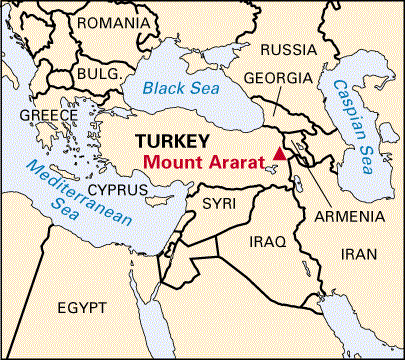

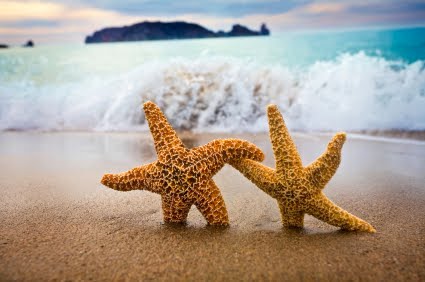




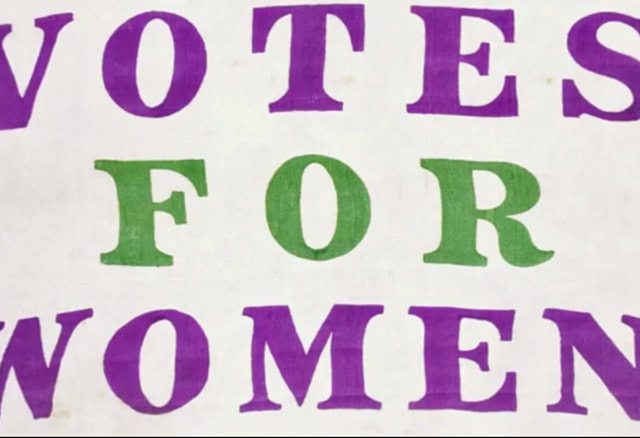
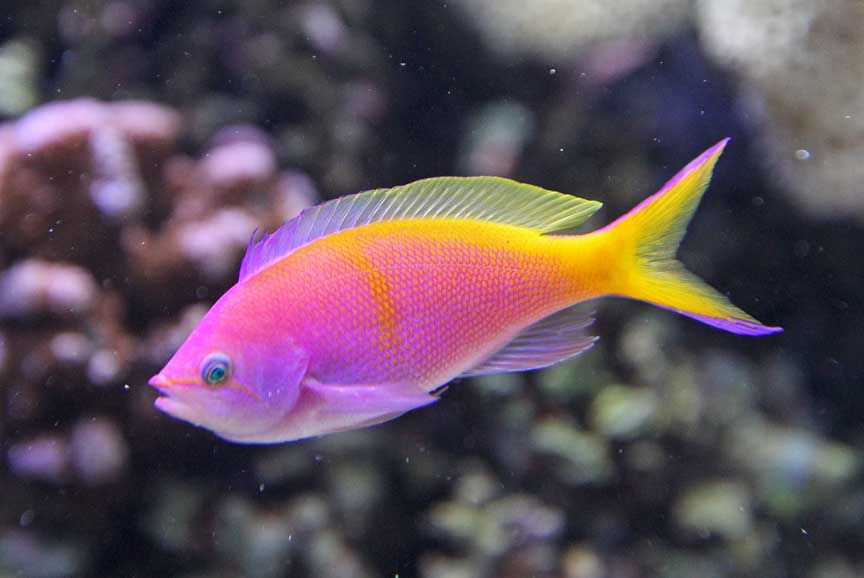


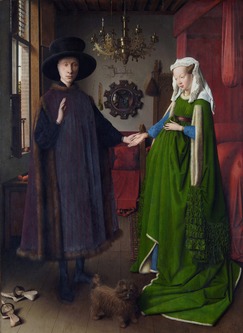
 RSS Feed
RSS Feed